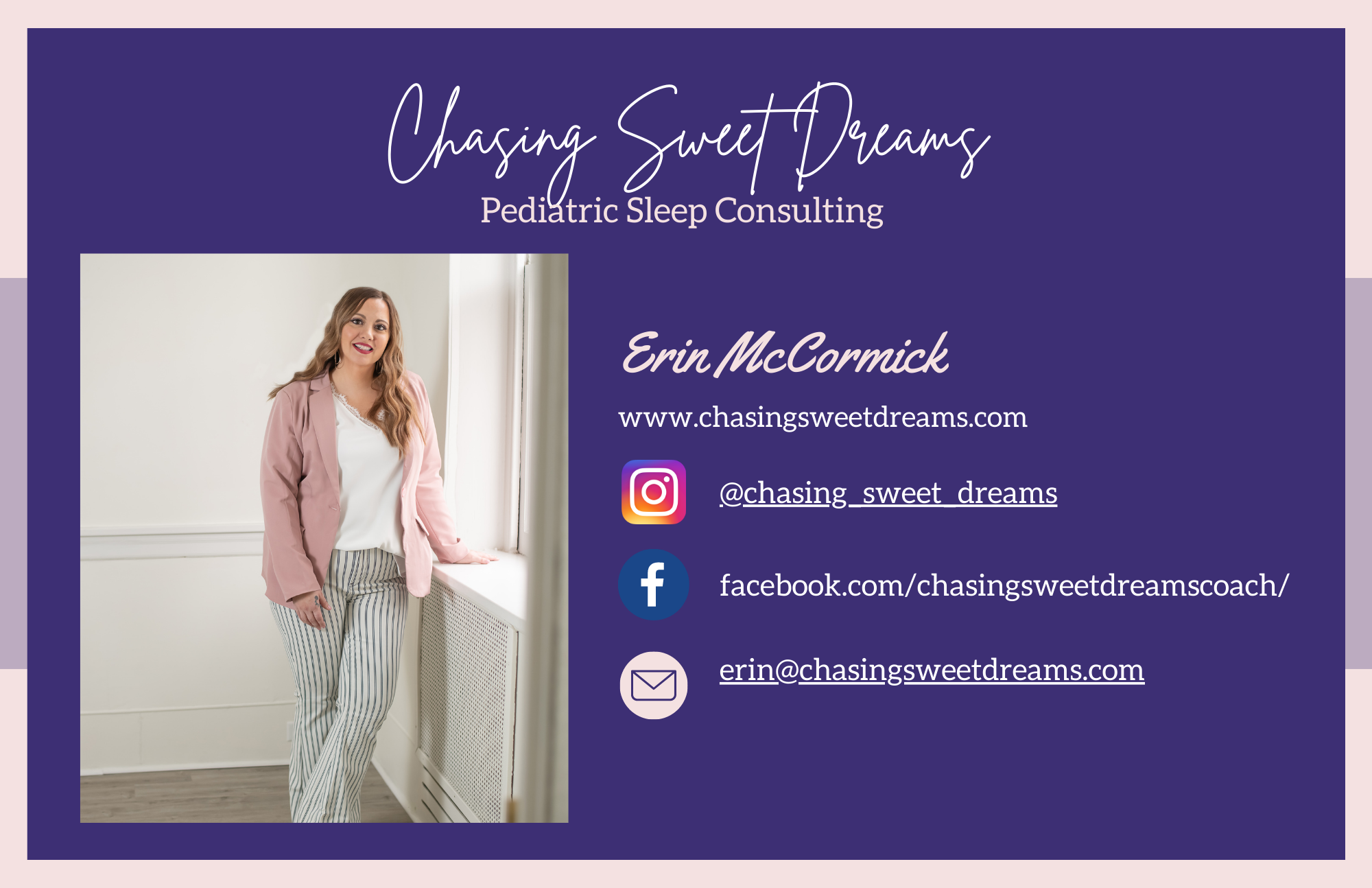Caregivers And Your Baby’s Sleep Needs
Is your baby or toddler about to transition to a new daycare or school? Will your child soon be cared for by a nanny or relative after having been cared for exclusively by you? It can be scary to face the fact of handing your little one to a new caregiver, especially if you’ve worked hard to build positive associations with sleep.
The good news is that babies and toddlers are very adaptable and incorporating new caregivers into your child’s sleep routine often isn’t as difficult as you might expect. In order to make the transition as easy as possible for your child, take a proactive stance by working with your caregivers to teach them how you normally do things. That said, you shouldn’t worry if your caregiver isn’t able to do things exactly the way that you do. The goal of this blog is to provide you with the tools that you need to help your child get the best quality sleep with new caregivers.
Listen on the Podcast
Arrange the environment for success.
Be sure your caregiver knows how to set the stage for success. Keep it cool, dark, quiet, and safe. Be sure your caregiver is aware of sleep basics and make sure you know where your caregiver plans to have your child nap. This may be intuitive to you but not at all to a new caregiver or one who has not kept up-to-date with recent research. Sadly, many tragic accidents have occurred when babies have been placed in unapproved sleep locations and left unsupervised by distracted caregivers (e.g., car seats, swings, etc.). Consider checking the CPSC website for recalled sleep devices, especially if your child will be cared for by a nanny, relative, or home daycare.
Maintain positive sleep associations.
Provide your caregiver with everything that your child needs for sleep (e.g., sleep sack, white noise machine, favorite blanket or lovey for older children). The less your caregiver has to think about, the smoother the transition will be.
TIP: If your child goes to a daycare center, it’s unlikely that the sleep environment will be perfect. However, you can request that your child be placed in a crib away from active spaces and you can often bring a white noise machine to place between your child’s crib and noisy environments.
 Tell your caregiver when to offer naps.
Tell your caregiver when to offer naps.
More often than not, caregivers are going to be responsible for putting your child down for naps. Your caregiver will likely have some sort of idea about when a baby should sleep based on the sleepy cues s/he’s showing. However, sometimes a baby’s sleepy cues don’t reflect his/her optimal sleep timing. The best way to keep your child sleeping well at night is to ensure that your child’s daytime schedule is consistent with what you know works best. If your child is under six months old or taking more than 2 naps, then she will go by wake windows to put baby down for a nap. If your child is older than six months old or on 1-2 naps, then you should be able to offer your caregiver a by-the-clock schedule to follow.
If your baby can fall asleep independently:
Set your caregiver up for sleep success.
Tell your caregiver how your baby normally transitions to sleep. Does your baby always lightly fuss upon transitioning to sleep? It will be important for your caregiver to know if that is normal behavior for your child. Similarly, tell your caregiver what naptime routines you usually offer before sleep. For example, do you read a book and sing a lullaby? Do you give your baby a pacifier, stroke her cheek, and then step out of the room? Do you rub the bridge of her nose? It will be helpful for your caregiver to know what comforts you have established to cue your baby for sleep. However, babies and toddlers can learn that different caregivers do different things, so don’t worry if your caregiver would like to put your child down in a slightly different manner. That said, it is very helpful if your caregiver can continue to put your child down awake in order to minimize the potential for regression.
Note: Not every nap has to be perfect and in the crib. Your caregiver can let your child fall asleep on the go in a stroller or car seat (supervised, of course) for a few naps a week.
If your baby is normally nursed, bottle-fed, or rocked to sleep:
Consider teaching your baby to fall asleep independently before making the transition to a new caregiving situation. This is hard! If your baby is nursed or rocked to sleep for all sleep times, then consider starting a sleep training plan to teach your baby how to fall asleep independently at bedtime and through the night first, then work on naps. If you need help with this, then check out my 1:1 services for help.
If you don’t have time to teach your child new skills before s/he starts with a new caregiver, then you can work on the skill-building when your baby is with you. It may be a little more challenging for your caregiver to get your baby to fall asleep for naps in the first week or so, but it should get easier with time. If your caregiver is unable to transfer your child to a crib without waking him/her up, then it may be a good idea to ask your caregiver to hold your child for at least one nap a day to avoid major sleep debt. Although it may seem counterintuitive to recommend that your caregiver hold your child for a nap, it is usually better than having your child end up coming home exhausted and underslept. Insufficient daytime sleep often leads to disrupted nights, so you should weigh the trade-offs for your situation to decide what to prioritize while you are working to change your child’s sleep habits. It shouldn’t be necessary for your caregiver to hold your child for sleep once s/he can fall asleep independently.
If your child is in a phase of separation anxiety:
If your child goes to school or daycare away from home, separation anxiety probably won’t be a big issue for naps (it might be at drop-off though!). If your child is cared for at your home while you are also at home, s/he may have a stress response if s/he sees you before naptime. In order to make it easier for your caregiver and your child, consider staying out of your child’s sight in the ~30 minutes before your child’s nap in order to make the transition easier. Learn more about the peak phases of separation anxiety and what they mean for sleep in babies and toddlers in my blog on sleep regressions.
Final Thoughts
These tips can help get you to make the transition to a new caregiver or daycare seamless. . If you’ve been trying methods you’ve read about online that seem to have worsened the transition, then you may need to develop a more complex approach by speaking with me.
Is your little one struggling with sleep? Set up a discovery call! I am here for you!
Sending sleepy vibes and sweet dreams your way!
Erin McCormick
Your Pediatric Sleep Consultant



